Related Research Articles
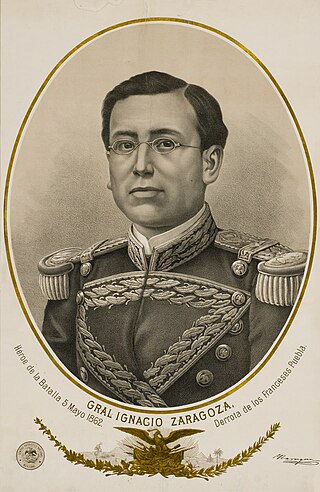
Ignacio Zaragoza Seguín was a Mexican Army officer and politician. He is best known for leading a Mexican army of 3,791 men which defeated a 5,730-strong force of French troops at the battle of Puebla on May 5, 1862 during the second French intervention in Mexico. The Mexican victory is celebrated annually as Cinco de Mayo.

Álvaro Obregón Salido was a Mexican military general, inventor and politician who served as the 46th President of Mexico from 1920 to 1924. Obregón was re-elected to the presidency in 1928 but he was assassinated before he could take office.
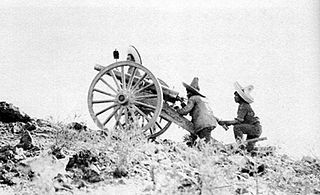
The Battle of Celaya, 6–15 April 1915, was part of a series of military engagements in the Bajío during the Mexican Revolution between the winners, who had allied against the regime of Gen. Victoriano Huerta and then fought each other for control of Mexico. The Constitutionalists under Gen. Venustiano Carranza faced off against the Army of the División del Norte of Pancho Villa. The first battle of Celaya was fought April 6–7, 1915, near Celaya in present-day Guanajuato, Mexico. The second battle of Celaya was fought April 15–16. These encounters between the Constitutionalist Army led by Gen. Álvaro Obregón, Venustiano Carranza's best general, and the army under the command of Pancho Villa were crucial in determining the outcome of the Mexican Revolution.

Miguel Gregorio de la Luz Atenógenes Miramón y Tarelo, known as Miguel Miramón, was a Mexican conservative general who disputed the Mexican presidency with Benito Juarez at the age of twenty seven during the Reform War, serving between February 1859 and December 1860. He was the first Mexican president to be born after the Mexican War of Independence.
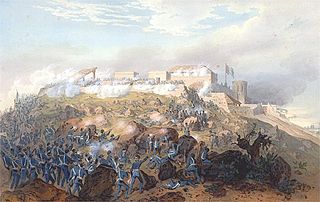
The Battle for Mexico City refers to the series of engagements from September 8 to September 15, 1847, in the general vicinity of Mexico City during the Mexican–American War. Included are major actions at the battles of Molino del Rey and Chapultepec, culminating with the fall of Mexico City. The U.S. Army under Winfield Scott won a major victory that ended the war.

Félix María Zuloaga Trillo (1813–1898) was a Mexican conservative general and politician who played a key role in the outbreak of the Reform War in early 1860, a war which would see him elevated to the presidency of the nation. President Zuloaga was unrecognized by and fought against the liberals supporters of President Benito Juarez.
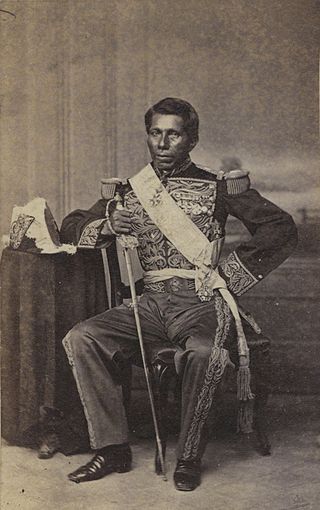
José Tomás de la Luz Mejía Camacho, better known as Tomás Mejía, was a Mexican soldier of Otomi background, who consistently sided with the Conservative Party throughout its nineteenth century conflicts with the Liberals.
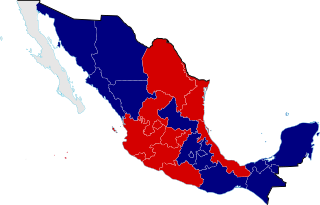
The Reform War, or War of Reform, also known as the Three Years' War, and the Mexican Civil War, was a complex civil conflict in Mexico fought between Mexican liberals and conservatives with regional variations over the promulgation of Constitution of 1857. It has been called the "worst civil war to hit Mexico between the War of Independence of 1810–21 and the Revolution of 1910–20". Following the liberals' overthrow of the dictatorship of conservative Antonio López de Santa Anna, liberals passed a series of laws codifying their political program. These laws were incorporated into the new constitution. It aimed to limit the political power of the executive branch, as well as the political, economic, and cultural power of the Catholic Church. Specific measures were the expropriation of Church property; separation of church and state; reduction of the power of the Mexican Army by elimination of their special privileges; strengthening the secular state through public education; and measures to develop the nation economically.

The military history of Mexico encompasses armed conflicts within that nation's territory, dating from before the arrival of Europeans in 1519 to the present era. Mexican military history is replete with small-scale revolts, foreign invasions, civil wars, indigenous uprisings, and coups d'état by disgruntled military leaders. Mexico's colonial-era military was not established until the eighteenth century. After the Spanish conquest of the Aztec Empire in the early sixteenth century, the Spanish crown did not establish on a standing military, but the crown responded to the external threat of a British invasion by creating a standing military for the first time following the Seven Years' War (1756–63). The regular army units and militias had a short history when in the early 19th century, the unstable situation in Spain with the Napoleonic invasion gave rise to an insurgency for independence, propelled by militarily untrained men fighting for the independence of Mexico. The Mexican War of Independence (1810–21) saw royalist and insurgent armies battling to a stalemate in 1820. That stalemate ended with the royalist military officer turned insurgent, Agustín de Iturbide persuading the guerrilla leader of the insurgency, Vicente Guerrero, to join in a unified movement for independence, forming the Army of the Three Guarantees. The royalist military had to decide whether to support newly independent Mexico. With the collapse of the Spanish state and the establishment of first a monarchy under Iturbide and then a republic, the state was a weak institution. The Roman Catholic Church and the military weathered independence better. Military men dominated Mexico's nineteenth-century history, most particularly General Antonio López de Santa Anna, under whom the Mexican military were defeated by Texas insurgents for independence in 1836 and then the U.S. invasion of Mexico (1846–48). With the overthrow of Santa Anna in 1855 and the installation of a government of political liberals, Mexico briefly had civilian heads of state. The Liberal Reforms that were instituted by Benito Juárez sought to curtail the power of the military and the church and wrote a new constitution in 1857 enshrining these principles. Conservatives comprised large landowners, the Catholic Church, and most of the regular army revolted against the Liberals, fighting a civil war. The Conservative military lost on the battlefield. But Conservatives sought another solution, supporting the French intervention in Mexico (1862–65). The Mexican army loyal to the liberal republic were unable to stop the French army's invasion, briefly halting it with a victory at Puebla on 5 May 1862. Mexican Conservatives supported the installation of Maximilian Hapsburg as Emperor of Mexico, propped up by the French and Mexican armies. With the military aid of the U.S. flowing to the republican government in exile of Juárez, the French withdrew its military supporting the monarchy and Maximilian was caught and executed. The Mexican army that emerged in the wake of the French Intervention was young and battle tested, not part of the military tradition dating to the colonial and early independence eras.
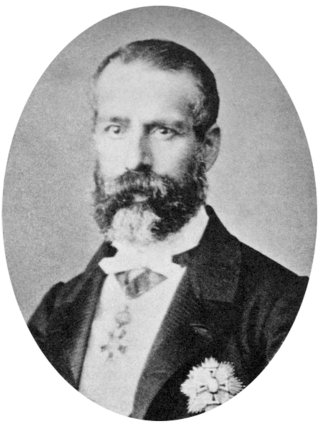
Leonardo Márquez Araujo was a conservative Mexican general. He led forces in opposition to the Liberals led by Benito Juárez, but following defeat in the Reform War was forced to guerrilla warfare. Later, he helped the French in their intervention to help restore the conservative cause. However, their defeat forced him into exile for most of the rest of his life.

Apaseo el Grande is a city and municipality located in Guanajuato, Mexico. The municipality covers 415.26 square kilometres (160 sq mi). It is bordered on the north by Comonfort and San Miguel de Allende, on the east by Querétaro in the State of Querétaro, on the south by Apaseo el Alto, and on the west by Celaya. The municipality had a population of 85,319 inhabitants according to the 2010 census.

José Santos Degollado Sánchez was a Mexican Liberal politician and military leader. He was raised by a priest in Michoacán and worked twenty years in the cathedral in Morelia. He became a Federalist in 1836 and entered politics in 1845 when he was elected to the Michoacán legislature in 1845. He replaced his close associate Melchor Ocampo as governor of Michoacán 27 March - 6 July 1848. He joined the Revolution of Ayutla. He became governor of Jalisco when the liberals successfully ousted Antonio López de Santa Anna. As with a number of rising Liberals, Degollado was not formally trained as a soldier, but gained military experience in the Revolution of Ayutla. He later fought for Benito Juárez's government. During Benito Juárez's presidency he served as Secretary of War and Navy and as Secretary of External Affairs. Degollado was a close friend of Guillermo Prieto and of Melchor Ocampo and fought by his side in many battles. Degollado was a resilient military leader, experiencing defeat after defeat in the Reform War that pitted the constitutional liberal government of Juárez against the conservatives. The army fielded by the conservatives was larger and better trained than the liberals' forces, but the liberals managed to achieve a stalemate for over two years and in the end triumphed. The liberal victory was not achieved by Degollado, who was in disgrace at the end of the war. Degollado was known as the "hero of defeats" for his ability to raise yet another army after yet another defeat. An experienced general who joined the liberal cause, General López Uraga, gave President Juárez a scathing assessment of the liberal army and Degollados's command of it. He had given everything he could to achieve a liberal victory, but his record of defeats meant his men were demoralized although continued to be loyal to him.

The Crabb Massacre was the culmination of the eight-day Battle of Caborca. It was fought between Mexico and their O'odham allies against irregular forces from the United States in April 1857. Due to the outbreak of the Reform War in Mexico between conservatives and liberals (1858-1860), the rebel Ignacio Pesqueira invited the U.S. politician Henry A. Crabb to colonize the northern frontier region in the state of Sonora. The colonists could help Pesqueira fight in the civil war and against the Apache.

The Battle of Silao took place on 10 August 1860 in the vicinity of Silao in Guanajuato state, Mexico, between elements of the liberal army, under the command of General Jesús González Ortega and Ignacio Zaragoza with a force of 8,000 men and elements of the conservative army commanded General Miguel Miramón by commanding an army of 3,282 during the War of Reform. The battle was a liberal victory. General Miramón was almost captured, but escaped in the disorder caused by the Republican artillery, abandoning artillery, ammunition and weapons.
The Battle of Ahualulco took place on 29 September 1858 during the War of Reform, near the town of Ahualulco in the state of San Luis Potosí, Mexico, between elements of the liberal army, commanded by the Generals Santiago Vidaurri, Juan Zuazua and Francisco Naranjo and conservative army troops commanded by General Miguel Miramón and Leonardo Márquez. Vidaurri's army was defeated and the conservatives won the battle as the result. The liberals suffered 672 casualties and 91 prisoners. It is considered by some to be one of the most brilliant triumphs of Miramón.
The Battle of San Joaquín in the War of Reform took place on 26 December 1858 in the municipality of Cuauhtémoc, between elements of the liberal army, under General Santos Degollado, and elements of the conservative army, commanded by General Miguel Miramón.
The Battle of Peñuelas took place on June 15, 1860 in the vicinity of Penuelas in the state of Zacatecas, Mexico, between elements of the liberal army, under the command of Gen. Jesus Gonzalez Ortega and elements of the conservative army commanded by General Silverio Ramirez during the War of Reform. The battle ended as liberal victory, leaving in a very compromising situation Miramon because this was amagado the south with the forces of Ignacio Zaragoza, in the north by Jesus González Ortega and from the east by Santos Degollado.

The Battle of Calpulalpan took place on December 22, 1860 during the War of Reform in the vicinity of the community of San Miguel de la Victoria in the municipality of Jilotepec de Abasolo in the State of Mexico, Mexico. It would be the last battle of the War of Reform (1858-1860).
The Battle of Salamanca took place between 9 and 10 March 1858 in Salamanca, during Mexico's War of Reform (1858-1860). Elements of the liberal army, under General Anastasio Parrodi, governor of the Jalisco, fought with Generals Leandro Valle, Santos Degollado, and Mariano Moret, against conservatives, commanded by General Luis G. Osollo. Osollo's army had some 5,000 men, including Generals Miguel Miramón and Tomás Mejía, Francisco García Casanova. The conservatives won, handed the liberals a second liberal defeat, and forced them to retreat to Guadalajara from Guanajuato.
References
- ↑ Hamett, Brian R. "Wars of Reform (Three Years' War)" in Encyclopedia of Mexico , 1601.